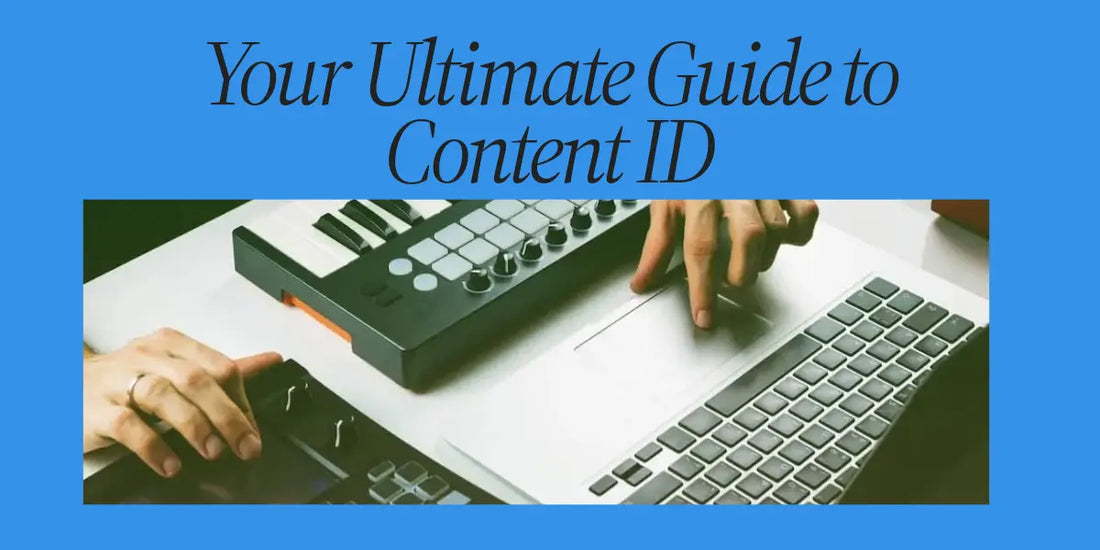
Your Ultimate Guide to Maximizing YouTube Content ID Earnings
Share
Every minute, over 500 hours of video are uploaded to YouTube. For music rights holders, this isn't just a staggering statistic—it's a monumental revenue opportunity. Hidden within millions of vlogs, tutorials, gaming streams, and fan compilations is your music, and YouTube's powerful Content ID system is the tool designed to find it and pay you for its use.
However, many artists and labels simply "set it and forget it," leaving significant money on the table.
Activating Content ID is just the first step. Maximizing its revenue potential requires a strategic, proactive approach. This guide will walk you through the essential strategies to move beyond basic claiming and turn YouTube's ecosystem into a powerful and consistent income stream.
First, A Quick Refresher: What is Content ID?
Content ID is YouTube’s digital fingerprinting system. When you deliver your music, it's stored as a "reference file." YouTube's servers constantly scan every video on the platform, searching for audio that matches your file. When a match is found, a "claim" is placed on the user-generated video, and your chosen policy is automatically applied:
- Monetize: Places ads on the video and directs the revenue to you.
- Track: Gathers analytics on the video's viewership without monetization.
- Block: Makes the video unavailable for viewing.
For anyone serious about revenue, the Monetize policy is the default and most powerful option.
The Foundation: Optimizing Your Assets for Detection
You can't maximize revenue if the system can't find your music in the first place. The quality and completeness of what you deliver are paramount.
- Deliver High-Quality Reference Files: The Content ID system is only as good as the files it has to reference. Always submit clean, professionally mastered, high-resolution audio files (like WAVs). Noisy, distorted, or low-quality MP3s can lead to missed matches.
-
Submit All Versions of Your Work: Don't just submit the main vocal mix. An instrumental version is often used more frequently in user-generated content (UGC) as background music. To maximize your reach, deliver every available version of a track as a separate asset:
- Main Mix
- Instrumental Mix
- Acapella
- Alternate Mixes (e.g., acoustic, remix)
- Impeccable Metadata is Non-Negotiable: Incorrect or incomplete metadata is the number one cause of lost revenue. When multiple parties claim ownership of a track, all revenue is held in escrow until the dispute is resolved. Ensure every asset you deliver has accurate ISRCs, ISWCs, and lists all composers, publishers, and their ownership splits. Clean data equals faster payments.
Advanced Strategies to Increase Your Earnings
Once your foundation is solid, you can implement strategies to actively boost your revenue.
1. Set Smart and Lenient Monetization Policies
While it might be tempting to block unauthorized uses of your music, this is the equivalent of leaving money on the table. The vast majority of UGC is from fans celebrating your work, not pirates trying to steal it.
- Monetize Everything by Default: A lenient monetization policy on UGC is crucial. A fan using your song in their travel vlog is a new revenue source. A gamer using your track in a highlight reel is a new revenue source. Let the ads run, and let the revenue flow to you.
- Use Custom Policies for Strategic Blocking: The only time to consider blocking a video is in specific territories where you might have an exclusive advertising deal that conflicts with YouTube's general monetization. For 99% of rights holders, a global "Monetize" policy is the most profitable approach.
2. Leverage a Professional Rights Management Partner
Most independent artists access Content ID through a distributor or a specialized rights management company. Choosing the right partner is critical. A great partner does more than just deliver your assets; they actively manage them. They will:
- Resolve Ownership Conflicts: They have the expertise to quickly resolve disputes and release funds from escrow.
- Perform Manual Claiming: The automated system isn't perfect. It can miss uses in live recordings, DJ mixes, or heavily edited clips. A dedicated partner has a team that manually searches for and claims these missed uses, uncovering hidden revenue streams.
- Provide Detailed Analytics: They can translate raw data into actionable insights, showing you which tracks are performing best on YouTube and why.
3. Analyze Your Data
Don't treat Content ID as a black box. Regularly review your analytics to understand what’s working. Are your instrumentals generating more revenue than your vocal mixes? Is a specific track popular with the gaming community? This data is invaluable, offering insights that can inform your future creative and promotional strategies.
Common Pitfalls That Reduce Your Earnings
- Submitting Ineligible Content: Never submit music containing non-exclusive samples, stock loops (e.g., from GarageBand), or public domain recordings. This leads to invalid claims, ownership disputes, and can even result in having your Content ID access revoked.
- Ignoring Fan-Uploaded Content: Many artists upload their music videos but fail to claim the versions uploaded by fans. These fan uploads can sometimes get millions of views. Ensure your policy is set to monetize these duplicates, not block them.
YouTube Content ID is more than a tool for fighting piracy; it's one of the most powerful monetization platforms available to musicians today. By shifting from a passive to an active management strategy, you can ensure you're capturing every dollar you've rightfully earned.
Need help finding background music that boosts engagement? 🎧 Explore our licensing catalog or work with Playbutton Media to get custom-curated music tailored to your content goals
